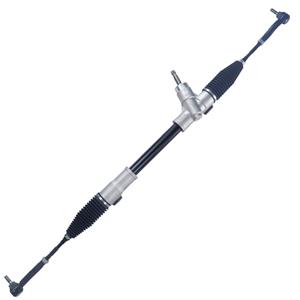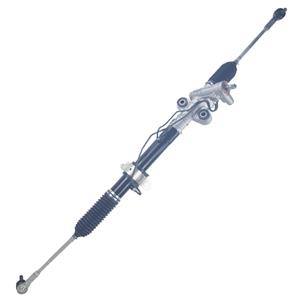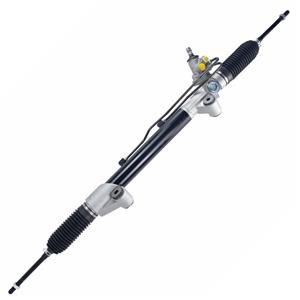What is the life expectancy of a rack and pinion?
The steering system of a car is a key part to ensure driving safety and handling performance, and the rack and pinion is the core of the system. As the vehicle is used, the rack and pinion will gradually wear out. Understanding its life expectancy and the need for regular maintenance is essential to ensure the normal operation of the vehicle and driving safety.
This article will take a closer look at the life expectancy of rack and pinion, the factors that affect its life, and at what mileage it needs to be replaced or maintained.
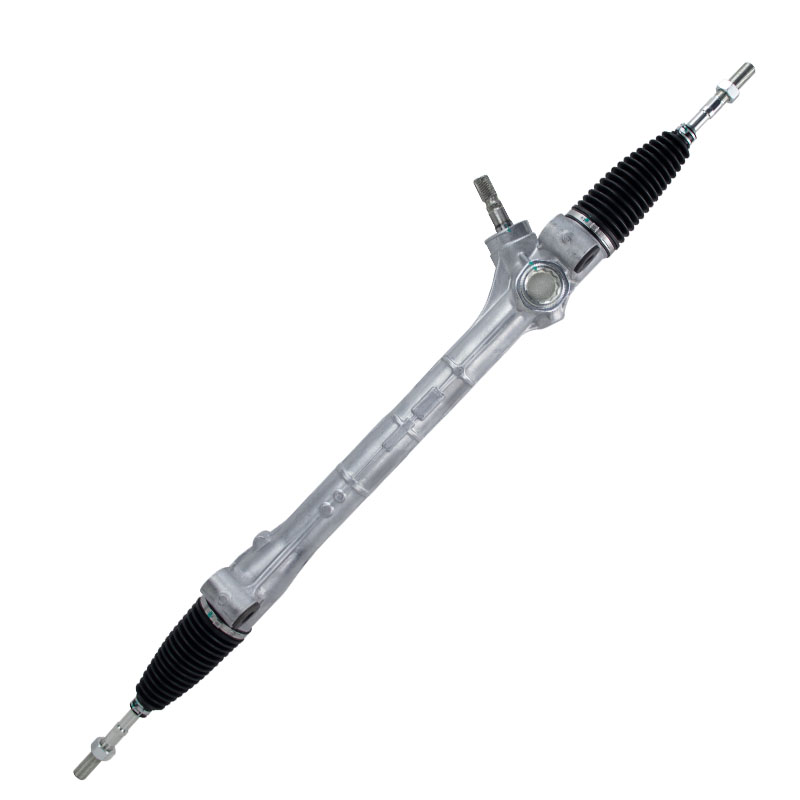
What is the working principle and structure of rack and pinion?
Before discussing the life and maintenance issues, it is crucial to understand the working principle and structure of rack and pinion. The rack and pinion system consists of a steering wheel, pinion, rack and related components. The steering wheel drives the pinion through a connecting shaft, and the pinion meshes with the rack to convert rotational motion into linear motion, thereby controlling the steering of the front wheels.
Due to its simple and reliable design, rack and pinion systems are widely used in modern vehicles. However, any mechanical component will inevitably wear out over time, and racks and pinions are no exception. Understanding their life expectancy can help car owners maintain or replace them at the right time to extend the life of the vehicle and improve driving safety.
What is the life expectancy of a rack and pinion?
Under normal driving conditions, the life expectancy of a rack and pinion is generally 7 to 10 years, or about 100,000 to 150,000 miles (about 160,000 to 240,000 kilometers). This life expectancy is based on daily commuting, good road conditions, regular maintenance, and normal driving habits. If the vehicle is used in a mild environment and the owner pays attention to maintenance, the rack and pinion may reach or exceed its expected life.
Under severe driving conditions, such as frequent driving on bumpy, pothole-prone, or gravel roads, the life of the rack and pinion may be significantly shortened. This is because these conditions increase the wear of the components, resulting in unstable meshing between the gears, which in turn affects the normal function of the steering system. In these environments, the life of the rack and pinion may be reduced to 5 to 7 years, or 70,000 to 100,000 miles (about 110,000 to 160,000 kilometers).
Extreme climates, especially high temperature, high humidity or severe cold, can also have a negative impact on the life of the rack and pinion. High temperature environments may cause accelerated aging of lubricants and damage to seals, which may accelerate gear wear. Severe cold environments may cause embrittlement of metals and thermal expansion and contraction of components, which may increase the risk of wear and failure. Therefore, in these environments, car owners should inspect and maintain the steering system more frequently.

What factors affect the life of the rack and pinion?
The actual life of the rack and pinion depends not only on the intended design, but also on a variety of external factors. Understanding these factors can help car owners take effective measures to extend the life of the rack and pinion.
Driving habits
● Sharp turns and sudden turns: Frequent sharp turns and sudden turns will cause additional stress on the rack and pinion, resulting in increased wear. Gentle steering operations and a steady driving style can help extend its life.
● Load pressure: When the vehicle is fully loaded or driving on steep roads, the pressure on the steering system will increase significantly. This will accelerate the wear of the rack and pinion, thereby shortening its life. Therefore, reasonable control of vehicle load is also an important means to extend the life of the rack and pinion.
Road conditions
● Uneven roads and obstacles: Frequent driving on uneven roads, potholes or encountering obstacles will impact the rack and pinion system, increasing the possibility of wear and damage. Good road conditions and avoiding unnecessary impacts can effectively reduce wear.
● Dust and dirt: When driving on dusty or muddy roads, dust and dirt can easily enter the rack and pinion system, resulting in poor lubrication and increased wear. Keeping the vehicle clean, regularly checking and replacing seals can effectively extend the life of the system.
Lubrication and sealing
● Lubricant quality and condition: Lubricants play a key role in the normal operation of racks and pinions. Insufficient lubrication or deterioration of lubricant quality will lead to increased wear, thereby shortening the life of the system. Regularly checking the condition of the lubricant and replacing it in time can effectively protect the rack and pinion.
● Seal integrity: Aging or damage to seals can cause lubricant leakage, which in turn accelerates gear wear. Therefore, regular inspection of the seal status and timely replacement of damaged seals are essential to extend the service life of the rack and pinion.
Manufacturing quality and design
● Manufacturing materials: The manufacturing materials of racks and pinions directly affect their durability and service life. High-quality steels generally have better wear resistance, while inferior materials may be more prone to wear or breakage.
● Design and process: The design accuracy and manufacturing process of racks and pinions also affect their life. Gear systems manufactured with high-precision design and advanced processes can generally maintain stable performance for longer, while design or manufacturing defects may cause early system failure.
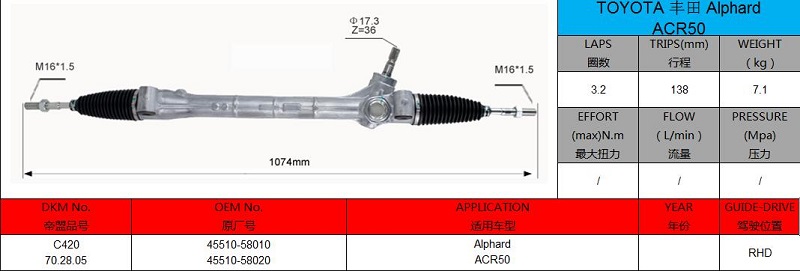
How many miles do you need to replace or maintain the rack and pinion?
Determining the timing of replacement or maintenance of the rack and pinion depends on its degree of wear, driving conditions, and vehicle mileage. Generally, replacement or maintenance of the rack and pinion needs to be considered in the following cases:
Between 100,000 and 150,000 miles
Under normal use conditions, the replacement mileage of the rack and pinion is usually between 100,000 and 150,000 miles. At this point, even if there are no obvious signs of failure, the rack and pinion may have some wear due to long-term use. Regular maintenance or replacement can prevent potential problems and ensure the continued reliability of the steering system.
When signs of wear are shown
If the vehicle shows signs of rack and pinion wear at 80,000 to 100,000 miles, such as heavy steering, unresponsive steering, abnormal noise or inaccurate steering, it should be inspected in detail and maintained or replaced as appropriate. Timely maintenance can extend the life of the system, while delayed maintenance may lead to greater mechanical problems.
Preemptive maintenance under severe driving conditions
Under severe driving conditions, such as frequent driving on uneven roads, extreme climate environments, or frequent heavy load operations, a comprehensive inspection and maintenance is recommended every 70,000 to 100,000 miles. This preventive maintenance can repair problems before they occur and avoid safety hazards caused by system failure.
Recommendations for rack and pinion maintenance
Regularly check the condition of the steering system, including the quality of the lubricant, the integrity of the seals, and the meshing of the gears. For vehicles with a long service life or high mileage, the inspection frequency should be increased, and maintenance or replacement should be carried out according to the actual situation.
In addition, maintain good driving habits, avoid sharp turns, sudden turns and frequent heavy-load operations, and try to maintain a smooth driving style. When possible, choose good road conditions to drive and avoid unnecessary shocks and vibrations. When the steering system is found to be abnormal, such as insensitive steering, abnormal noise or oil leakage, it should be checked and repaired immediately.
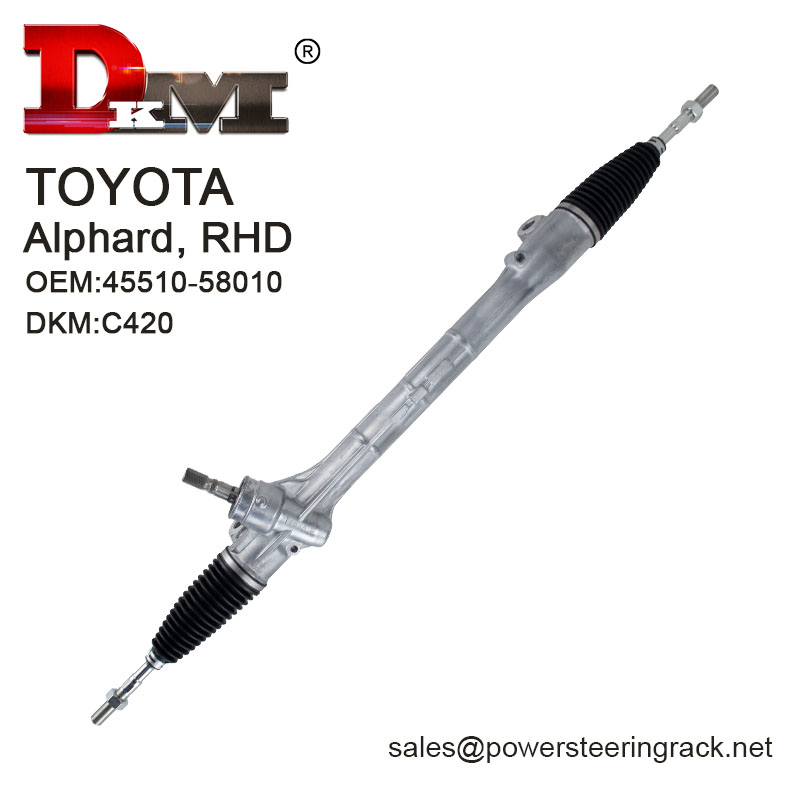
Conclusion
As the core component of the automotive steering system, the life and performance of the rack and pinion directly affect the handling and safety of the vehicle. Although its life can reach 100,000 to 150,000 miles under normal circumstances, its life may be shortened under harsh driving conditions or extreme climate environments. There are many factors that affect the life of the rack and pinion, including driving habits, road conditions, lubrication and sealing quality, etc.
In order to ensure the long-term reliability and driving safety of the steering system, the owner should regularly check and maintain the rack and pinion system, especially when the vehicle reaches a certain mileage. If the steering system is abnormal during driving, it should be checked and repaired in time, and replaced if necessary.
It is very important for every car owner to know the expected life of the rack and pinion and at what mileage they need to be replaced or maintained. This can not only help car owners plan the vehicle's maintenance plan reasonably, but also take preventive measures before problems occur, thereby reducing unnecessary maintenance costs and potential safety hazards.


